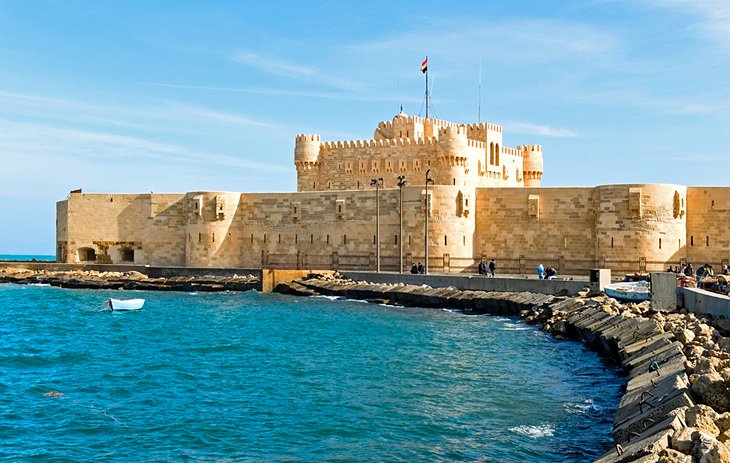
Walk the long shore-front Corniche road heading west, and you’ll finally arrive at Fort Qaitbey. It may be a poor substitute for what was once the site of the mighty Pharos Lighthouse — one of the seven wonders of the ancient world — but this squat and dinky fort has been standing guard over Alexandria’s eastern harbor since 1480. The Pharos itself said adieu to Alexandria in 1303 when it was toppled by a violent earthquake.
Fort Qaitbey was built by Mamluke Sultan Qaitbey in an effort to fortify this important Egyptian port from attack, and rubble from the toppled lighthouse was used in its construction. Inside, you can explore the series of stone-walled chambers and climb up to the roof to look out over the Mediterranean.








